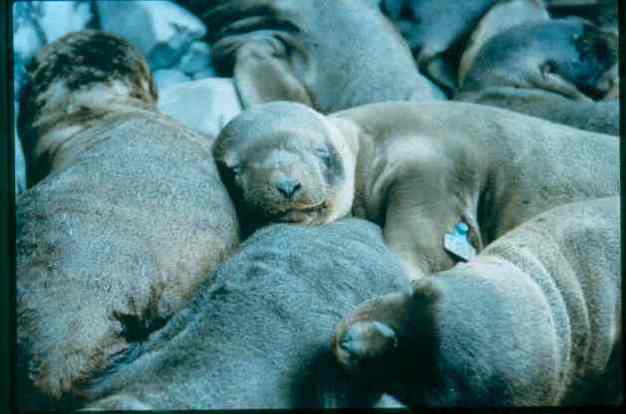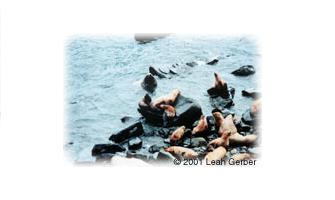By: Laura Dee ( Bren School of Environmental Science and Management, University of California, Santa Barbara ) & Leah Gerber ( Department of Ecology, Evolution, and Environmental Science, Arizona State University ) © 2012 Nature Education
![]()
Citation: Dee, L. & Gerber, L. (2012) Applications of Decision Theory to Conservation Planning and Management. Nature Education Knowledge 3( 10 ) :11
![]()


![]()
![]()
Decision analysis represents a practical framework for environmental decision making in the face of uncertainty.


![]()
© 2012 Nature Education Courtesy of L. Gerber. All rights reserved.

![]()
© 2012 Nature Education Courtesy of L. Gerber. All rights reserved.
Decision theory is a formal study of rational decision-making formed largely by the joint efforts of mathematicians, philosophers, social scientists, economists, statisticians and management scientists (Jeffrey 1983, 1992). While decision theory has a rich history of applications to real-world problems in many disciplines, including economics, risk analysis, business management, and theoretical behavioral ecology, it has more recently gained recognition as a useful approach to conservation in the last 20 years, (e.g., Maguire 1986, Maguire & Boiney 1994, Ralls & Starfield 1995, Possingham 1996, 1997). However, the use of formal approaches to conservation planning that draw upon decision theory remains limited; yet, as outlined in this introductory paper, they offer a practical, objective, and promising methodology to decision-making that can be applied more often, and that explicitly accounts for uncertainty and risk in environmental management. In this case, risk and uncertainty — two central concepts in decision theory-are considered two separate entities:
Risk is present when future events occur with measurable probability
Uncertainty is present when the likelihood of future events is indefinite or incalculable (uncertain likelihoods).
Conservation planning represents an ideal case for the use of decision analysis. Conditions under which decision analyses are particularly useful include, 1) complex decisions, 2) a choice under uncertainty, 3) a decision among competing options or when 4) temporal variability in outcomes may exist — common scenarios encountered by environmental managers. Under these conditions, decision analysis aids in decision-making by quantifying risk, explicitly accounting for uncertainty, and making decisions more objectively and efficiently.
To illustrate the concepts explained in this paper, we use the management of Steller sea lion populations as an example for which this decision-theoretic framework can be applied. The recovery of Steller sea lion populations has interested managers and conservation biologists alike, as they were listed as endangered in 1997 (under the Endangered Species Act 1973). The Steller sea lion population decline is potentially linked to the cumulative effects of a number of factors (NMFS 1995). Possible causes include natural factors (e.g., predation, disease, variation in abundance and distribution of prey), nutritional stress caused by removal of prey by commercial fisheries, direct kills of sea lions by commercial and subsistence harvesting, intentional and incidental kills by fisheries, entanglement in marine debris, pollution, and other disturbances (NMFS 1992). As Steller sea lions were negatively impacted by commercial fisheries and are protected under the Endangered Species Act (ESA), protective measures that constrain fishery management plans were adopted to protect sea lion populations. Under the ESA mandate, each decision within the fishery management system (which is largely driven by economic goals) now requires consideration of its potential impacts on the population persistence of the Steller sea lion.
Given the diversity of potential impacts on the population, there is considerable disagreement about the most appropriate measures to protect the Steller sea lion and restore its population, while minimizing the impact on several important commercial fisheries. In addition to the potential tradeoff between the conservation of Steller sea lions and profits from commercial fisheries, there are high levels of uncertainty in numerous parameters associated with the decline and potential recovery of Steller sea lions, therefore this case provide an exemplary situation to apply a formal and objective decision-making methodology.
Approaches based on decision theory can provide objective decision strategies for the management of threatened and endangered species in which managers need to choose among several courses of action under uncertain conditions. Uncertainty can refer to not knowing about the state of the world, the probabilities that our knowledge of all possible states of the world is accurate, or the consequences of a decision in terms of payoffs or losses. The most common type of scenario is when there is uncertainty about the state of the system. While most cases will have associated information and knowledge, it is highly unlikely that the state of the system will be known with absolute certainty. When faced with uncertainty, Maguire (1986) identified two methods of decision analysis that can be used for conservation planning: (1) the development of probabilistic models relating the outcomes of alternative actions to random events in the environment, and (2) the assessment of objectives for different outcomes given specified decision criteria or objectives. The first step of these approaches involves identifying three main components that specify the problem: actions, states, and outcomes (Resnik 1987). Here, actions refer to the decision alternatives, states refer to the relevant possible states of the system in which the decision will be implemented, and outcomes refer to what will occur if a an act is implemented in a particular state of the system. To illustrate how each of these approaches can be used, we will continue to use the example of managing a population of Steller sea lions.
For the Steller sea lion case, three specifications are required: the proposed alternatives or management action (Ai); the states of the system (Si); and the outcome of each act under each state (Oi), where the subscript i represents different versions of the same variable or an event in the set of states, actions and outcomes. First, the states of the system will be specified where each Si represents a hypothesis about the state of the systems with respect to the decline of the Steller sea lion population. The states include
S1: Commercial fishing is causing the decline
S2: Marine debris and pollution are causing the decline
S3: Alaska native subsistence harvest is causing the decline
S4: Killer whales are causing the decline
S5: Disease is causing the decline
S6: A broad scale oceanographic regime shift with subsequent impacts on the north Pacific ecosystem, is causing the the decline
The relevant management actions to reduce Steller sea lion mortality include
A1: Manage fisheries by x amount
A2: Reduce entanglement in marine debris and pollution by j amount
A3: Reduces subsistence harvest by m amount
A4: Manage killer whale population by k amount
A5: Vaccinate a proportion, v, of the Steller sea lion population against disease
A6: Do nothing.
In this situation probabilities (pj) will be assigned to each of the possible states. For each alternative/state pair (Ai/Sj) there will be an expected outcome of the proposed management alternatives, Oij, which can be expressed as expected payoffs or expected losses. Each expected outcome, Oij, is also assigned an expected utility, referring to the expected costs and benefits of implementing a management action.
Generally, since decisions are often made under uncertain conditions, uncertainty can be expressed in probabilistic terms so that the analysis of the likelihood of each outcome (according to the rules of probability theory) may allow objective adjudication among management options. Here, there is uncertainty about the state of the system (e.g., the cause of population decline in Steller sea lions, listed as Si) and the extent to which implementing an action will impact the population given the state of the system (i.e., the utility of a given action).
A decision table for this example can be constructed as follows:
| States of the World | ||||||
| Alternatives: | S1 (p1) | S2 (p2) | S3 (p3) | S4 (p4) | S5 (p5) | S6 (p6) |
| A1 | O11 (U11) | O12 (U12) | O13 (U13) | O14 (U14) | O15 (U15) | O15 (U15) |
| . | . | . | . | . | . | . |
| A6 | O61 (U61) | O62 (U62) | O63 (U63) | O64 (U64) | O65 (U65) | O65 (U65) |
| Table 1: A decision table, showing states of the world (S 1–6), possible alternatives (A 1–6) and the expected outcomes and utilities of each alternative/state pair (Ai/Sj). | ||||||